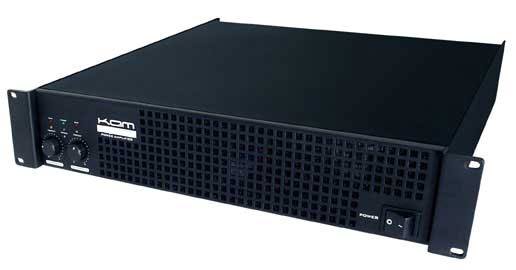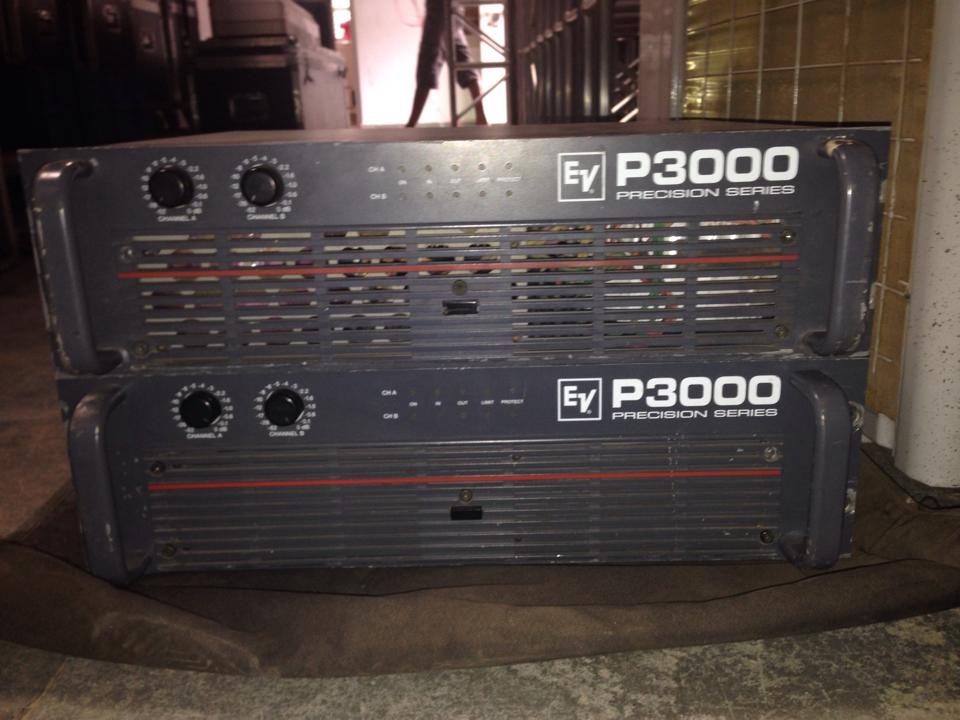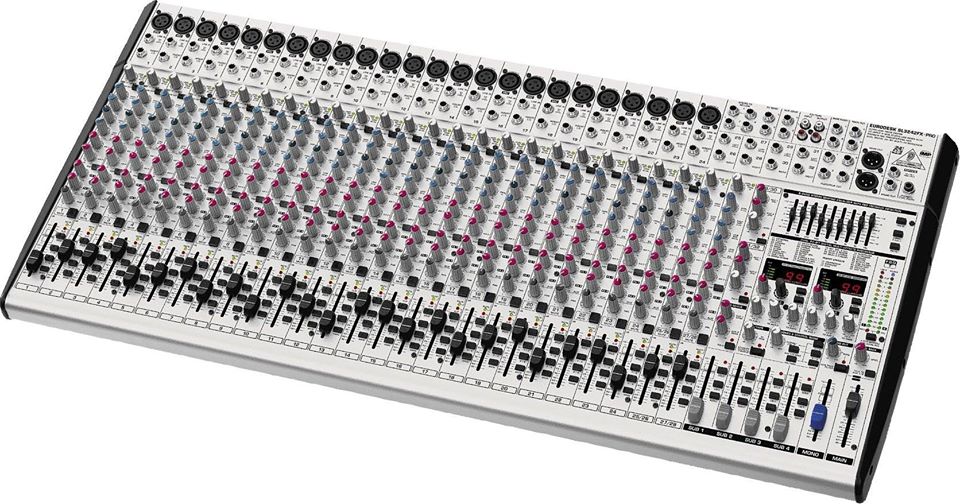Amplifiers modulate the amplitude of a sound signal in that they transform them from low amplitude to high. On the other hand, mixers change the quality and level of an audio signal and to conglomerate several signals. Another name given to mixers is mixing console or soundboard.
There are several differences between a mixer and an amplifier. A mixer conglomerates numerous signals to a single output or a cluster of productions. On the contrary, an amplifier converts a low amplitude signal into a more significant signal. The amp drives one or more loudspeakers when designed to intensify a line-level signal satisfactorily.
Nowadays, a mixer and an amp that is available for sale in the market are very efficient in snowballing the sound signal. These enable the message to reach far corners of a large room. With a proper Knowledge on a mixer and an amplifier, one can have an impressive audio/visual experience. Utilising the existing mixers and amplifiers can be done to give an understandable A/V experience.
Compared to digital mixers, analogue mixers are the most popular. Analog mixers combine signals via resistive networks while Digital mixers put together the figures signifying the signals. Therefore, in both cases, the mixers perform mathematic operations on the input signals but by deferring means. They may both agree to take a microphone and line-level signals and offer extra signal routing and inputs for processing.
Since there are mixers for various purposes, you can acquire one depending on your needs. For example, powered mixers are suitable for a band that brings their PA tо gigs. They are suitable because they make transport and setup less hectic.
There are two types of amplifiers: one is a preamp and the other power amp. A preamp takes an input signal, situations it and then directs it to the power amp. The power amp then receives the signal from the preamp. It then conveys it with sufficient power to drive the speakers that it serves.

What is a Mixer in the Sound System?
A mixer puts together sounds from many mixed audio signals in the sound system. Singers use various inputs including microphones and picking signals from electric instruments or recorded music. The mixer can control analogue or digital signals depending on which type it is. After modification, the signals put together, produce combined output signals. The signals are transmitted and amplified using a sound strengthening system. A mixer combines numerous signals to a single output or a cluster of
Mixers do more than just mixing signals because they provide ghost power for condenser microphones. Thus it is possible to change the position of sound in the stereo sound field. As a result, sound engineers can boost sound. Consequently, audio engineers can increase the general advantage of the system without necessarily going beyond the energetic parameters of the system.
Mixing consoles have so many applications, ranging from nightclubs, studio recording sessions, sound reinforcement systems, dissemination, television, public address systems, and film post-production. For instance, a DJ mixer utilises only two channels in mixing two record players. Powered mixers are suitable for a band that brings their PA tо gigs. The mixers are proper is because they make transport and setup less hectic.
What is an Amplifier in the Sound System?

An amplifier enhances an electric current of an audio signal. It takes advantage of a microphone to collect sounds from the surrounding world. It then transforms them into a changeable electric current which varies in strength continuously. For example, a transistor-based amplifier enhances the input signal numerous times before turning it into the earphones. The transformation makes it possible to hear an overblown version of the original sound.
It is straightforward to calculate the difference made by an amplifier. To achieve this, you utilise the ratio of the output signal to that of the input signal. The measurement refers to the gain factor or the amplification factor of an amplifier. For example, an amplifier that triples the original signal or input signal has a gain factor of 2. Decibels express the amplification factor of sound amplifiers. To obtain the decibel, multiply the logarithm of the gain factor by ten.
It is, however, imperative to insist that the most crucial part of the amplifier is that it must be able to replicate the quality of the input as compared to it just boosting the electric current. Raising must be possible even at the time when the signal is dramatically changing in both frequency and amplitude.
MIXING CONSOLES
Mixing consoles are the central hub for any recording or production studio. They allow the user to control and shape audio signals in various ways. Mixing consoles allow users to mix, pan, adjust levels, apply EQ or other processing effects, route signals between tracks and more. With all these features and functions, finding the right mixing console that meets your needs is important.
When deciding on a mixing console, there are several factors to consider.
- The type of sound you are looking for and the number of inputs and outputs the console will need to accommodate your needs.
- How many channels will you be using, as well as whether or not you will be recording live instruments or just electronic sources?
- The type of effects and other features you may need?
- How much you are willing to spend and the type of physical size and shape you will need.
Selecting a mixing console that matches your requirements ensures that your studio has the best possible sound quality. There are a variety of popular brands and models available, so be sure to read reviews and compare features before making your purchase. Some of the top brands in mixing consoles include
Avid Pro Tools HDX
The Avid pro tools HDX features advanced pro tools software and the ability to mix up to 128 channels. It offers pristine audio quality with low latency and a wide dynamic range.
Yamaha CL/QL Series
The Yamaha CL and QL series offer a powerful, versatile and flexible mixing console platform for live performances and studio recordings. You can select the right model that best meets your needs with various models available.
PreSonus StudioLive AI Mixers
The PreSonus StudioLive AI mixers provide a comprehensive digital mixing solution with an intuitive user interface. They are designed to be used live and in studios, making them ideal for any situation.
Allen & Heath QU/XR Series
The Allen & Heath QU and XR series are some of the most popular mixers in the world. They are designed for live sound reinforcement, with an intuitive user interface and powerful processing capabilities.
Mackie Onyx Series
The Mackie Onyx series of mixers provide a range of models suited for live sound reinforcement and recording. They offer a simple user interface and a selection of effects and processing capabilities.
Behringer X32 Series
The Behringer X32 series provides users with an advanced digital mixing console at an affordable price point. The mixer offers an intuitive control surface, advanced routing options, and a selection of effects and processing.
Each of these mixing consoles offers a variety of features and benefits, so be sure to read up on each console to determine which one best fits your needs.
Amplifiers
Amplifiers boost the signal from the mixing console and provide more power to speakers or other devices. They can also be used to adjust the tone and texture of a sound. Different amplifiers have different features, so choosing one that meets your needs is important. Popular brands of amplifiers include
Crown Audio
Crown Audio amplifiers provide industry-standard power and performance. Their amps are reliable and offer a variety of features, making them ideal for live performances or studio recordings.
Yamaha
Yamaha amplifiers are designed to be lightweight and powerful, offering sound quality that is accurate and dynamic. They can handle a wide range of sound sources and provide flexibility in terms of tone.
QSC Audio
QSC Audio amplifiers are designed to deliver high-quality sound at an affordable price. They offer a wide range of features and can be used for live performances and studio recordings.
Mackie
The Mackie line of amplifiers provides power, accuracy, and durability. They are designed to be used in live performance and studio recording applications.
When selecting an amplifier, consider the following:
- The power rating
- The number of channels
- The type of inputs and outputs
- The features offered
- The physical size and shape.
Powered mixers
These refer to mixers that come with their amplifiers and speakers. Powered mixers are ideal for live performances, as they reduce the need for extra equipment. Popular brands of powered mixers include
Yamaha EMX Series
Yamaha’s EMX series of powered mixers provide a versatile solution that can be used for both live performances and studio recording applications. They offer a variety of features, such as four-band EQ, an effect processor, and onboard digital reverb.
Behringer X Air Series
The Behringer X Air series offers a selection of powered mixers with different models for live performance and studio recording. They are designed to provide high-quality sound with various features, such as digital effects and onboard processing.
Mackie DL Series
The Mackie DL series offers lightweight powered mixers that are ideal for musicians on the go. They offer multiple inputs, digital effects, and other features to help you create professional-sounding mixes.
How to Connect a Mixer to an Amplifier
A proper understanding of a mixer and amplifier can greatly impact one’s audio/visual experience. Connecting a mixer and an amplifier using a guitar cable is easy. Mixers control the sound of several audio devices at a time.
Linking a mixer and an amplifier makes it possible to listen to the devices connected to it. Both a mixer and an amplifier should have both the primary input and output port. Additionally, one must read the user manuals to better understand a mixer and an amplifier.
A mixer and an amplifier are first unplugged from any outlet or power source. You plug one of the finishes of a guitar cable in the receive port of the speaker amp. Furthermore, you insert the other end of the wire in the main transmit port of the mixer. Additionally, you plug the power adapter of the mixer in the exit and connect the other end to the mixer. You then plug in the power supply of the amp and switch on the amplifier switched on.
What is a Powered Mixer
Powered mixers are analogue mixers with inbuilt power amps( a mixer and amplifier in one unit). These make it possible to play sound with the mixer linked to the speakers directly. You turn on powered mixers in the cases when you connect the same equipment. Most DJs find this more appropriate because they can conglomerate a mixer and an amplifier, effects, and cables into one convenient unit. Therefore, it makes the whole system easy to set up.
One of the critical factors to consider before choosing a type of powered mixer is to find the number of instruments and vocalists that will be on stage. Another factor to consider is whether or not an additional built-in effect processor will be required. Most recent powered amps have extra features, for example, reverb and graphic equalisers. There is no difficulty in finding a powered mixer that suits your application as there is a wide range to choose.
Mixer and Amplifier Price
Most professionals use electric guitar amplifiers comprising of combo amps. These have an output of 15 to 40-watt and an 8-12 inch speaker and are proper for small venues such as a coffee shop. Such amps cost $40 to $200. For example the Line 6 Spider IV 15 goes for about $100.
For bass guitars, combo amps typically require more power compared to an electric guitar amp. They cost $80 to $300, have 20 to 100 watts output. They are also suitable for small venues. For example, the Behringer BXL450 sells at mostly $159. The amp has an out of 45-watt
Amps cost about $80 to 400 For semi-professional DJs. These amps have a cooling fan. For instance, the PylePro PZR6XA powered amp prices like $130 and has an output of 1100 watts.
Conclusion
In summary, there is a wide range of mixers and amplifiers to choose from, depending on one’s needs. However, a powered mixer being a combination of a mixer and an amp is advantageous and convenient. Notably, the budget one has will also determine the type of mixer and amplifier they will choose.
The budget is a factor because different mixers and amplifiers have different prices. Additionally, the size of the venue being will determine the type of mixer and amplifier one will choose. Lastly, an amplifier converts low amplitude signals to larger ones while a mixer combines several signal outputs to form a single one.

